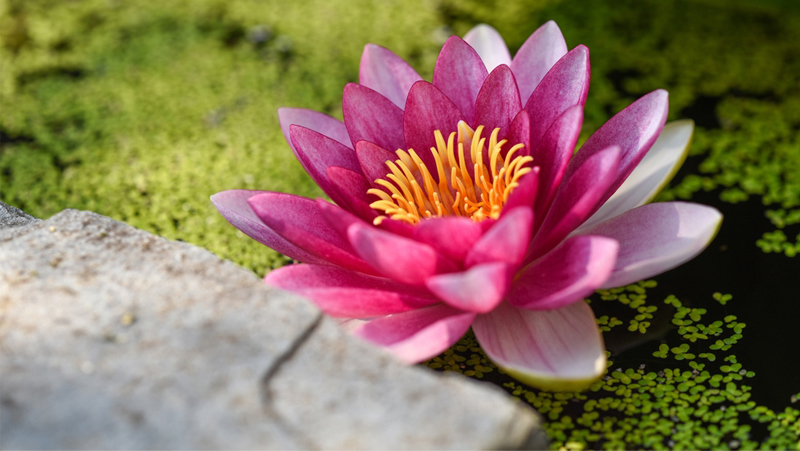Yates Account
Join now
Create a Yates account today!
Sign up to join the Yates Garden Club for monthly e-mails packed with seasonal inspiration, tips for success & exclusive promotions.
Plus if you’re a Garden Club member you can take part in the Yates Growing Community - a blog to share successes, get advice & win prizes in fun challenges along the way!

Forgot password
Enter the email address associated with your account, and we'll email you a new password.

One of the best ways to attract wildlife into your garden is by creating a shallow garden pond. It will become a haven for dragonflies, frogs, lizards and small birds. Be cautious, however, if you have small children in the family or as regular garden visitors. It might be better to wait until the children are older before installing your pond.
Where to place the pond
A frog-friendly wildlife pond is best situated in a spot that gets dappled light during the day, but never enough sun to heat up the water. On the other hand, don’t have trees directly overhanging the pool as leaves falling into and rotting in the water can cause problems.
Make sure the pond surrounds include some hiding places for wildlife. A few rocks or a natural-looking log would be ideal. A dip in one side of the pond makes a useful entry point for lizards and frogs. If the pond sits above ground level, you’ll need to construct a ramp up to the sides. This can be made out of sand, gravel or a tree branch.
Planting
Plants around the pond not only provide shelter for frogs, they create an ideal habitat for other creatures. Choose reedy varieties such as isolepis or juncus for the edges of the pond. Lomandras are also good and the streamside - growing Lomandra hystrix is a particular favourite (as is the fine-leafed Lomandra ‘Tanika’). Native violets (Viola lyallii), with their small white flowers, make an attractive ground cover that will flourish in light shade.
Cannas, especially some of the newish coloured leaf varieties, do well in the damp areas around a pond. Their vertical growth helps them to stand out against a shrubby background.
Floating plants such as waterlilies provide hiding places for tadpoles and frogs, and bridges for small lizards. But, in order to flower well, waterlily plants need a reasonable depth of water and quite a few hours of sunlight each day.
Fertilising
Choose carefully when feeding plants near a pond. Under-fertilising is preferable to over-fertilising. Organic pellets such as Yates Dynamic Lifter Organic Plant Food are the best because they’re gentle, slow-release and don’t carry high levels of soluble nutrients. Try not to let fertiliser fall or wash into the pond as high nutrient levels will inevitably lead to the formation of algae.
Pest control
Select pest control methods for streamside plants with even more care. Never allow chemicals to contact the water in the pond. If it’s absolutely necessary to apply an insecticide, select soft options like Yates Nature's Way Vegie Insect Spray Natrasoap Concentrate and use a shield to keep it away from the water.















Share
Share this article on social media